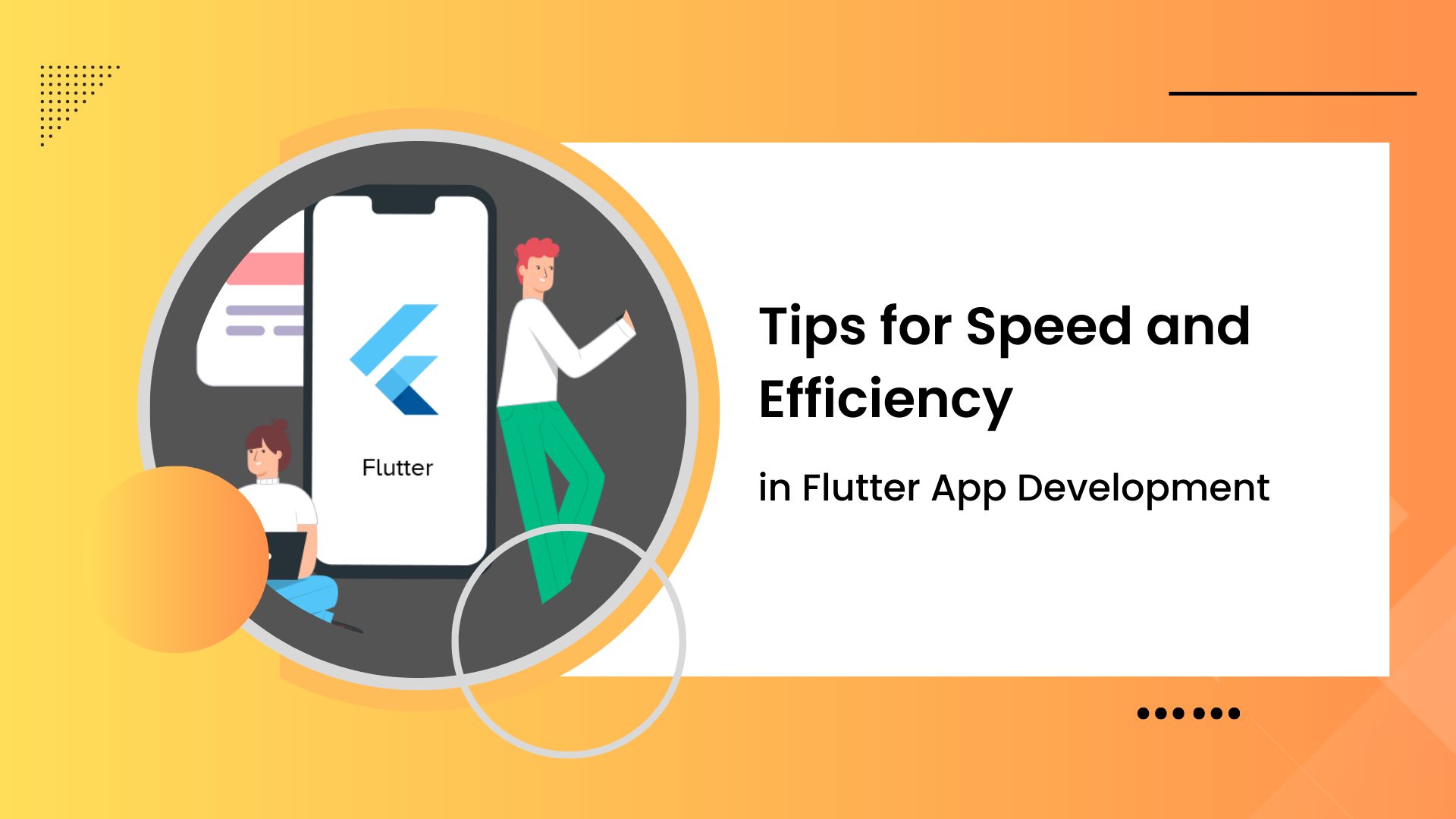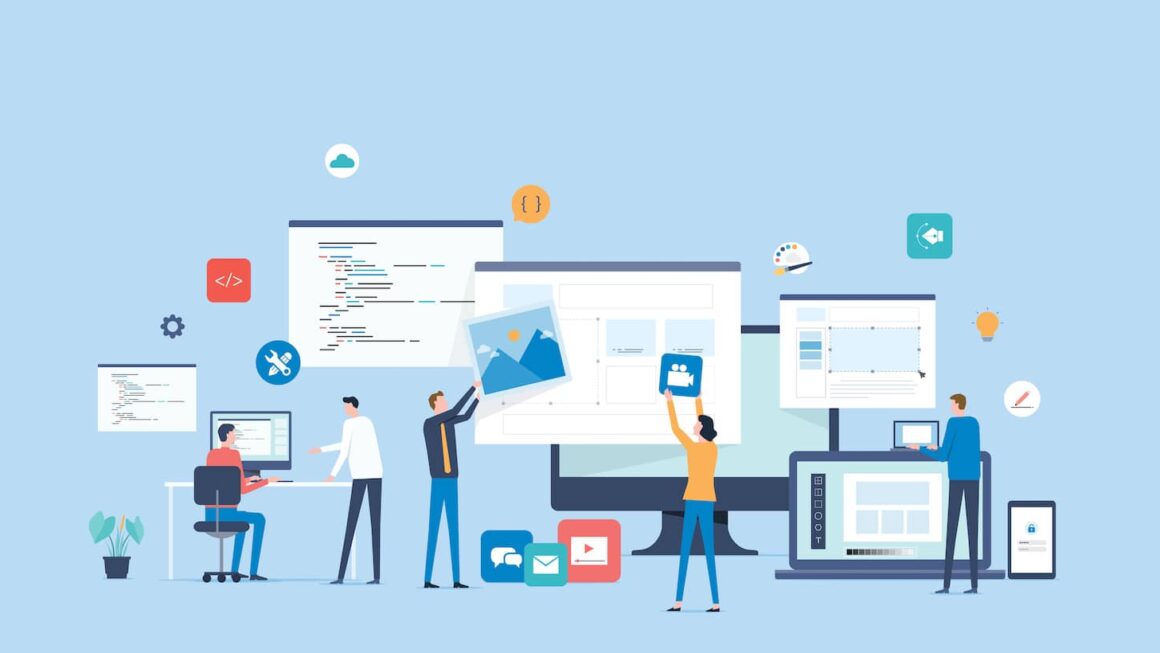In the fast-paced world of mobile app development, speed, and efficiency are crucial factors that can make or break the success of a Flutter app. Efficient development practices save time and resources and create a smoother user experience.
This blog will explore essential tips and techniques to boost speed and efficiency in Flutter app development.
Optimizing Development Environment
Setting up a streamlined development environment is crucial for speeding up your Flutter app development workflow.
- Start by installing Flutter SDK and configuring it properly.
- Choose a code editor or IDE that suits your preferences and offers useful features like code completion, syntax highlighting, and debugging tools.
Popular choices include Visual Studio Code, Android Studio, and IntelliJ IDEA. Take advantage of Flutter-specific extensions and plugins for these editors to enhance your productivity.
Additionally, familiarize yourself with Flutter’s command-line tools, such as the Flutter CLI, which can help automate common development tasks. By optimizing your development environment, you can eliminate unnecessary friction and boost your efficiency as a Flutter developer.
Planning and Architecture
Effective project planning is essential for maintaining speed and efficiency throughout your Flutter app development process. Define your app’s goals, target audience, and desired features.
Break down the development process into smaller tasks and create a timeline to keep yourself organized. Consider creating a wireframe or prototype to visualize the app’s structure and flow before diving into development.
This upfront planning helps you identify potential challenges and make informed decisions, reducing the need for rework later.
Choosing the appropriate architecture pattern is crucial for building a scalable and maintainable Flutter app. Various architecture patterns are available, such as the Provider pattern, BLoC (Business Logic Component) pattern, or even a combination of patterns.
Research and understand the strengths and weaknesses of each pattern to determine which one best aligns with your app’s complexity and requirements. A well-designed architecture simplifies code organization, improves code readability, and makes it easier to introduce changes or add new features in the future. By selecting the right architecture pattern, you can optimize your development process and ensure a solid foundation for your Flutter app.
Efficient Widget Usage
Leveraging Flutter’s widget system effectively is key to building reusable UI components and maximizing speed and efficiency in your app development. Flutter provides a rich set of built-in widgets that cover a wide range of UI elements and interactions.
These widgets can save time and effort by leveraging pre-built functionality and adhering to Flutter’s design guidelines. Additionally, you can create custom widgets that encapsulate complex UI components and behaviors, allowing for code reusability across different parts of your app. Proper widget usage allows you to create a consistent and visually appealing user interface while reducing development time and effort.
It’s essential to use Flutter’s built-in and custom widgets effectively to ensure efficient development in Flutter. Flutter’s built-in widgets, such as Text, Image, Container, and ListView, provide ready-to-use UI components that can be easily customized to match your app’s design requirements.
These widgets are optimized for performance and help streamline your development process. Furthermore, creating custom widgets allows you to encapsulate frequently used UI elements and functionalities into reusable components.
This approach promotes code reusability, improves maintainability, and enables faster development iterations. You can achieve efficient and rapid Flutter development by leveraging built-in and custom widgets.
State Management
Choosing the right state management approach is crucial for maintaining speed and efficiency in your Flutter app development. As your app grows in complexity, managing the state becomes essential to keep your app’s data synchronized and to provide a smooth user experience.
Flutter offers various state management libraries, including Provider, BLoC (Business Logic Component), MobX, and many more. When selecting a state management approach, consider the complexity of your app and the scalability requirements. Flutter’s built-in setState() function can be sufficient for simple apps. However, adopting a dedicated state management library for more complex apps can help organize and manage your app’s state more efficiently.
Implementing state management libraries like Provider, BLoC, or MobX can greatly enhance development speed and efficiency. These libraries provide well-defined patterns and structures for managing state in Flutter, making it easier to separate business logic from the UI layer.
They enable you to handle complex state changes, asynchronous operations, and data sharing between different components of your app effectively. By adopting a robust state management solution, you can write clean and maintainable code, improve code reusability, and enhance the overall efficiency of your Flutter app development.
Code Organization and Structure
Applying clean code principles and best practices is essential for maintaining speed and efficiency in your Flutter app development. By following clean code principles, such as SOLID (Single Responsibility, Open-Closed, Liskov Substitution, Interface Segregation, Dependency Inversion), you can improve the maintainability and readability of your code. Keep your functions and classes focused on a single responsibility, use meaningful variable and function names, and break down complex tasks into smaller, manageable units.
Additionally, adopting design patterns like MVC (Model-View-Controller) or MVVM (Model-View-ViewModel) can help separate concerns and make your codebase more modular and maintainable.
Organizing your project’s directory structure is another crucial aspect of improving speed and efficiency in Flutter app development. By structuring your project logically and organized, you can easily navigate and locate specific files and resources.
Consider grouping related files into separate directories based on functionality or feature. For example, you can have different directories for screens, models, services, utilities, and resources.
Performance Optimization
Optimizing app performance is vital for delivering a smooth and responsive user experience. One way to achieve this in Flutter is by minimizing widget rebuilds. Flutter’s reactive framework allows for efficient UI updates by only rebuilding the necessary widgets when the underlying data changes. To optimize performance and leverage Flutter’s key feature, the widget’s shouldUpdate method to control when a widget should rebuild.
This can be done by comparing the new and previous states or using immutable data structures. By minimizing unnecessary widget rebuilds, you can significantly enhance the speed and efficiency of your app.
Implementing asynchronous programming techniques is another strategy for improving the smoothness of your Flutter app. Asynchronous operations, such as network requests or file handling, can potentially block the main UI thread and result in a sluggish user experience.
By utilizing Flutter’s async/await mechanism and asynchronous APIs, you can execute time-consuming tasks in the background without blocking the UI. This ensures your app remains responsive and performs smoothly, even during resource-intensive operations.
Testing and Debugging
Thorough testing is crucial in ensuring your Flutter app’s speed, efficiency, and overall quality. By conducting comprehensive tests throughout the development process, you can identify and fix issues early, reducing the chances of encountering critical bugs in production.
Consider adopting a testing strategy that includes unit tests, integration tests, and widget tests to cover different aspects of your app’s functionality. Write test cases that cover various scenarios and edge cases to validate your app’s behavior.
Automated testing frameworks like Flutter’s built-in testing library or third-party solutions like Flutter Test or Mockito can help streamline your testing efforts and provide valuable insights into the reliability of your app.
Regarding debugging, Flutter offers powerful tools to assist you in efficiently identifying and resolving issues. Flutter’s debugging tools, such as the Flutter Inspector, visually represent your app’s widget tree, enabling you to inspect and debug individual widgets and their properties.
Take advantage of Flutter’s hot reload feature, which allows you to make code changes and see the results instantly, reducing development time. Additionally, Flutter’s DevTools provide detailed performance profiling and memory usage analysis, helping you optimize your app’s performance. By mastering these debugging tools, you can quickly diagnose and fix bugs, leading to faster and more efficient development.
You Might Like: AI Facial Recognition Software Development Cost and Features
Third-Party Libraries and Packages
Every Flutter app development agency extends the functionality of its apps by utilizing third-party libraries and packages. However, evaluating and selecting efficient and reliable packages is crucial to avoid unnecessary overhead and maintain speed and efficiency.
Before integrating a library, thoroughly research its reputation, community support, and compatibility with the latest Flutter versions. Check the package’s documentation and GitHub repository for frequent updates and active maintenance. Consider the package’s performance, code quality, and the impact it may have on your app’s size and performance.
Opt for libraries that align with your app’s specific requirements and avoid incorporating unnecessary functionality that could add unnecessary complexity and hinder performance.
Overall, we’ve explored valuable tips for speeding up and improving efficiency in Flutter app development. You can enhance code readability and scalability by applying clean code principles and organizing your project’s directory structure.
By implementing these tips, you can significantly improve the speed and efficiency of your Flutter app development, leading to faster delivery, better performance, and a smoother development process. Embrace these practices and explore new tools and techniques to stay at the forefront of Flutter app development. Happy coding!












